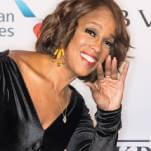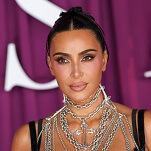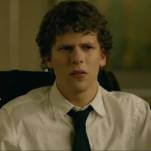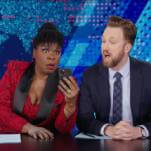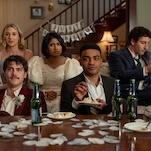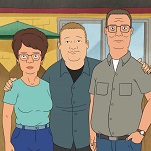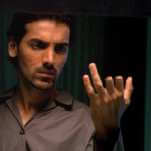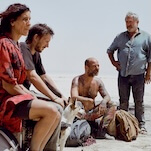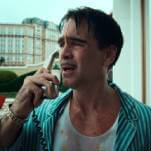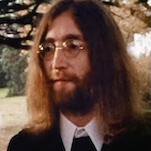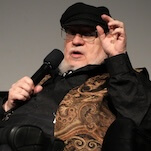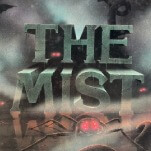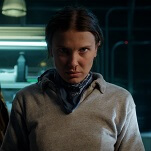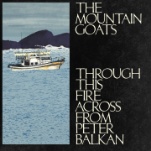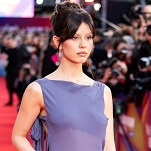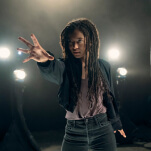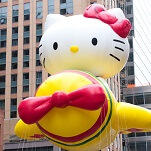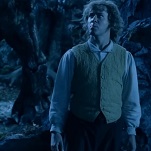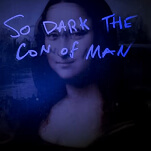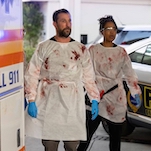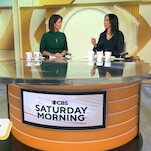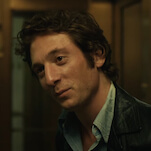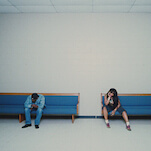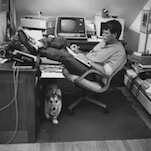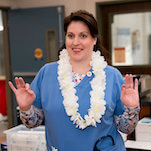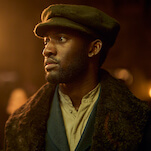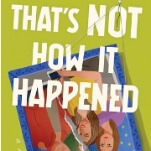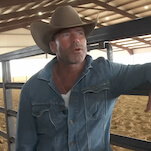There’s a sort of sick pleasure in wanting to watch a documentary like About Face, seeing the once beautiful in all of their craggily glory or, more formally, in the Janice Dickinson way. There’s talk of plastic surgery but few cat ladies to speak of, which is fine. It's a documentary, not a freak show. Famous, still perfect, faces, if not names, abound — Jerry Hall, Christy Brinkley, Pat Cleveland, Cheryl Tiegs — to reflect on their careers. But listening to beautiful people speak wistfully about their glamorous lives with little drama to serve up leads to a dull hour. A behind-the-scenes of glimpse of modeling from titans of the industry who are no longer concerned with pissing off the wrong people would similarly be documentary-worthy, but instead About Face is a dull doc that covers little new ground.
It starts strong by discussing the rise of the fashion model, via Carmen Dell’orefice, a model since 1947 who is still mind-blowingly gorgeous at 81. As World War II forced rich American fashionistas to shop at home because they could no longer to go to France for a custom wardrobe four times a year, the advertising industry started to come to prominence. Several women, beginning with Isabella Rossellini, discuss how they got into modelling. It was an escape for most of them, a chance at a career when women weren’t afforded the opportunity. For Paulina Porizkova, it allowed a literal escape. She considers her first modeling gigs attempts by her parents via the Swedish press to allow her to emigrate from the Czech Republic where her family had been persecuted.
But then About Face becomes sort of a shapeless, with no real narrative arc or action. The juicy stuff — such as racism and drug use in the industry — are touched upon briefly but are glossed over in favor of model bios and obvious reveals. Do we really need a model to tell us that advertising perpetuates the youthful ideal?
China Machado talks about how the great Richard Avedon threatened to breach his contract with Harper’s Bazaar if pictures of Machado weren’t published because of the magazine’s reservations about how the first non-Caucasian in the magazine would play to their Southern readers. Pat Cleveland recounts stories of going on modeling tours geared toward women of color and being harassed by townsfolk as if she was Frankenstein’s monster. But these are simple anecdotes swimming around glowing remembrances of the industry, which is especially disappointing because not a great deal has changed since they wouldn’t put Cleveland on the cover of Vogue. Racism in the fashion industry isn’t news and giving it a cursory segment doesn’t leave much of an impact.
Drugs are treated obliquely, as well. Lisa Taylor is brave enough to own up to her problem, but few others do, and the toll drugs took on women working in the industry is largely glazed over. It’s hard to take a documentary seriously when the former fashion director of Vogue basically says she exploited models for their drugged-out look is used as transition for Jerry Hall to talk about how glamorous it was to hang out with Andy Warhol and be part of the scene.
Despite the recognizable pouts, it’s interesting to see who is not included, because they didn't want to talk or not. The only model from the golden age of supermodel-dom in ’90s — when the likes of Cindy Crawford, Linda Evangelista, Stephanie Seymour and Claudia Schiffer ruled the world — is Christy Turlington. It may not seem that long ago since they graced many a-magazine cover, and many still work on campaigns (Naomi Campbell and Kate Moss will outlive us all). But their insight into how the industry changed, especially with the rise of TV ads featuring supermodels and the growing longevity of a model's career could have made for an interesting conversation.
Rossellini and Porizkova have the reflections most-worthy of camera time, if only because Rossellini is actually as gloriously weird as she seems and because Porizkova clearly disdains her former profession. “I don’t think there’s any 15-year-old girl that will turn down the chance to be called beautiful,” she says. “You don’t realize at that point that you’re also going to be called ugly.”
